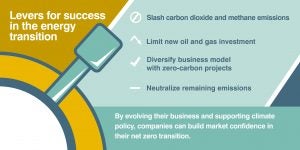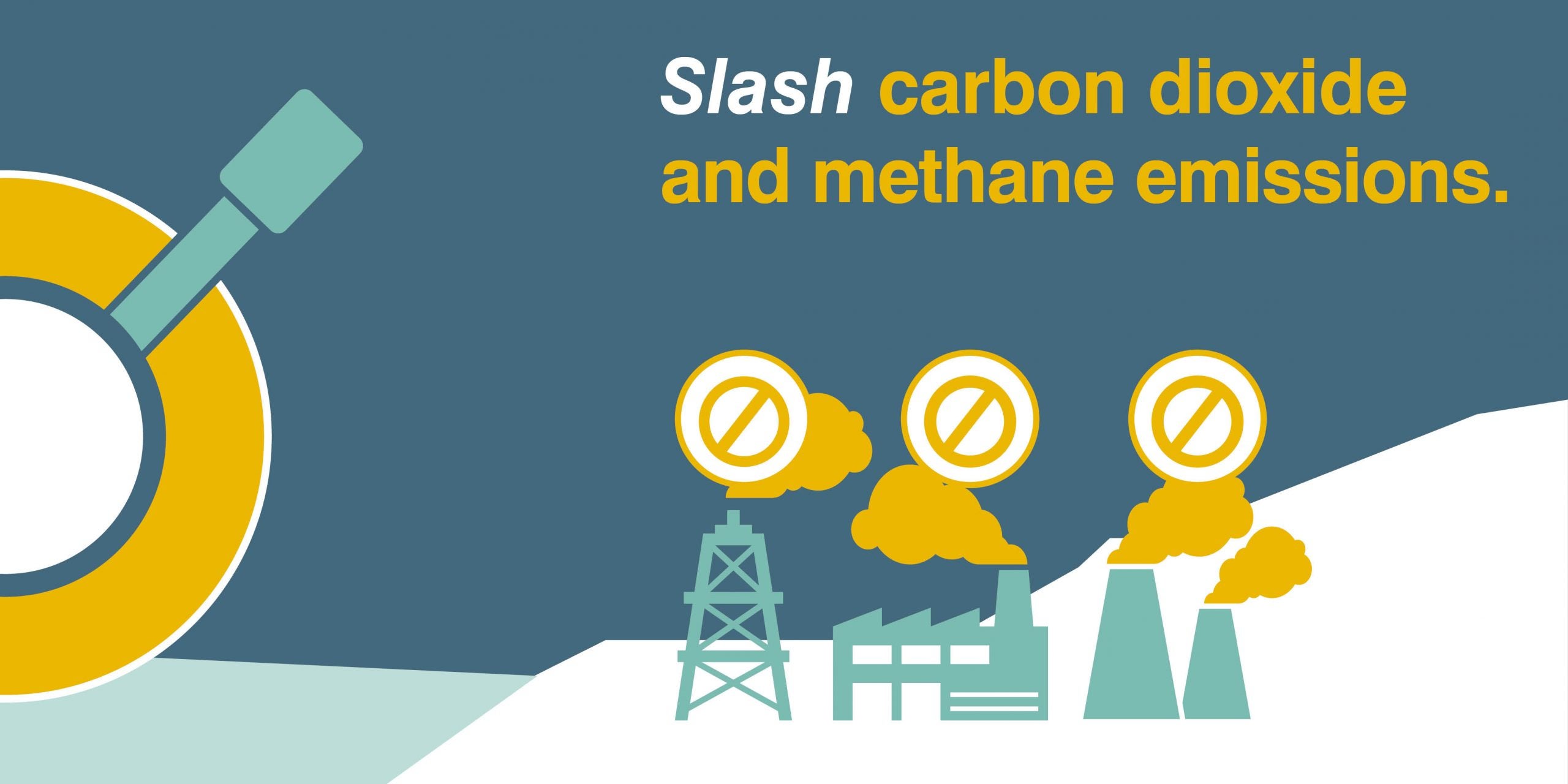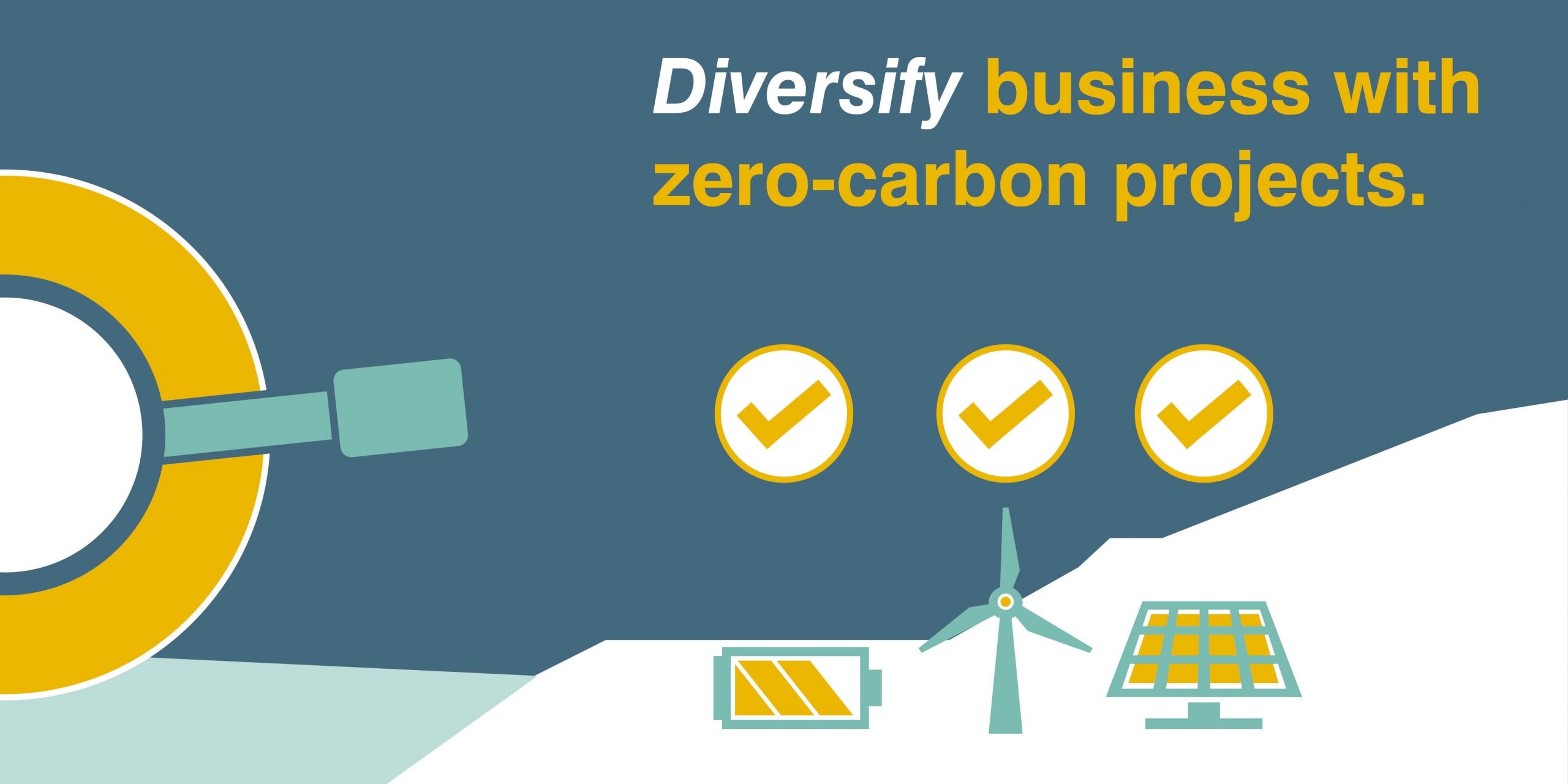
Climate, capital and COVID: What’s an energy executive to do?
Mark Brownstein co-authored this post.
We’re hearing more oil and gas companies pledging to reinvent themselves for a new, low carbon energy era. This conversation is unfolding as those same companies grapple with massive impacts of the global pandemic, as well as competitive challenges from cleaner, often cheaper alternatives that had been gaining steam well before the current crisis.
So how can investors and other stakeholders tell which companies are genuinely rising to the occasion? Each producer is going to have to find its own way to navigate the profound transformation of their industry and still make money doing it. But we think there are four key elements (below) that every company must engage to compete in this decade and beyond.
Existential challenge
A perfect storm of factors has exposed the extreme volatility and unsustainability inherent in the traditional oil and gas business model of producing as much oil and gas as possible, as quickly as possible, without regard to the climate and public health toll. Century-old businesses must be transformed from the inside out.
Climate, capital and COVID: What’s an energy executive to do? Share on XIt’s not just environmentalists saying this anymore. One big reason so many CEOs are out stumping about the energy transition is that their investors are insisting on it. They’re frustrated with dwindling returns and alarmed by the material risks of climate change.
Companies are beginning to evaluate how to reinvent and risk-proof their businesses. Success will mean remaking themselves into more efficient enterprises. Access to talent and continued license to operate is on the line for many companies, and access to capital and end markets for many more.
Net-zero emissions by 2050 — which means cutting greenhouse pollution as deeply as possible, then capturing the rest — is the goal. Failure is not an option. Global oil and gas producers including BP and Shell have recognized this North Star, and BP has begun putting metrics and milestones to its plan. Others are contemplating a similar direction. Many have not yet awakened to the need for profound change. But whether they recognize it today or not, they’re all facing the same challenge.
Investor and social pressure will only continue to grow as the planet warms.
Four elements for success
There’s no one-size-fits-all solution. Each management team must develop its own strategy that fits its competitive advantages, its geographies, investor base and business partnerships. But there are four basic levers every company will have to pull in some combination to develop an energy transition strategy worthy of confidence and capital on the path to net-zero.
- Slash greenhouse emissions coming from oil and gas production, the value chain and end use. This includes carbon dioxide, methane and the local air pollutants impacting communities around the world (often the least advantaged ones). And not just from wholly-owned operations; today’s oil and gas industry comprises vast networks of joint ventures and shared assets. Companies can’t hold these partnerships to lower standards, or simply offload polluting assets and claim success.
- Slow, then stop, investment in new exploration and production, petrochemicals and refineries. Furthermore, any dollar a company spends toward exploration, production and refining activities must be justified within the context of achieving the net-zero goal. There’s no tolerance for saying one thing while doing another. While nobody expects wholesale change overnight, companies need to start hitting the brake pedal before the sharper turns ahead. BP’s commitment to cut oil and gas production 40% by 2030 garnered praise from Greenpeace UK and a 7% day one stock bounce from the market.
- Move serious capital from traditional oil and gas into the zero-carbon energy technologies of the future. This is where the real, fundamental change begins, and where business growth opportunities in the energy sector are multiplying. While diversification won’t come easily for everyone, many will seek competitive risk-adjusted returns, whether dialing up solar energy, becoming an offshore wind major, leaning in to the electrification mega-trend, or innovating elsewhere. Aggressively integrating renewables in upstream operations is a pragmatic place to start.
- Begin working with customers, suppliers and others to implement strategies and technologies to neutralize any emissions that remain. Options range from protecting tropical forests or collaborating with partners on sustainable farming practices to new direct air capture technologies that can suck carbon pollution out of the air and store it or recycle it.
That’s a big ‘to-do’ list. But for a capital intensive industry with long-lived assets, 2050 will come sooner than it seems. Interim milestones to measure and evaluate progress will be key.
Finally, big changes in the energy sector require government and business leaders working together to create and implement policies and regulations that make it easier for companies to pull the levers cost effectively. That’s why it’s also in companies’ self-interest to lean into progressive policy advocacy, from methane regulation to a price on carbon, from rules that assure carbon sequestration with environmental integrity to electrification incentives.
Urgency & momentum
The moment is now. Fatih Birol, head of the International Energy Agency, is among many who recognize that global efforts to cope with the economic fallout from the COVID-19 crisis offer a historic opportunity to scale up the technologies needed for the clean energy transition. Forward-looking executives know not to let a crisis go to waste, and are setting the foundation to emerge leaner and cleaner when the dust settles.
The defining decade for oil and gas in the energy transition has begun. The decisions executives make now will shape the fate of their companies and that of the planet. Our money is on those who rise to the challenge and make it their business to help solve some of the world’s biggest problems.
















